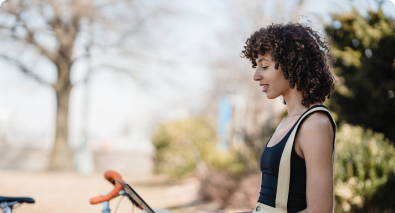
I know most of you all are aware of the projected workforce shortage for urologists in the United States. The most recent figure I heard at the AUA, last month, was that 47% of U.S. urologists are over 55 years of age. Needless to say, there will be plenty of jobs.
The numbers are much more depressing when you look at Africa. There is a severe lack of trained urologists in most of the continent, and in some areas it's worse than others. For instance, there is not a single urologist in the eastern half of the Democratic Republic of Congo.
Two weeks ago I had the good fortune of returning to the Democratic Republic of Congo (DRC) to participate in providing much needed urologic care to women in the eastern part of the country. Last year, a fellow resident, Greg Broughton, and I travelled to Bukavu, DRC with our chairman, Dr. Smith. Dr. Smith has, for many years, been traveling to different parts of Africa not only to provide urologic care to patients but also to work to improve the mechanism of delivery and infrastructure of urologic education for physicians in Africa.
## Panzi Hospital
A few years ago, he first established a relationship with Panzi hospital in Bukavu, DRC. Panzi hospital was founded by Dr. Denis Mukwege and built in 1999 under his direction. The hospital focuses on the treatment of issues related to obstetrical complications and trauma from sexual violence, both of which often result in urinary fistulas and/or urinary incontinence.
There has been a good deal of violence and warfare in the eastern part of DRC over the past 2 decades. Many people are quite aware of all that went on in Rwanda in 1994. Much of that conflict spilled over to Congo and there are still warlords in eastern DRC that cause trouble. Rape is, unfortunately, a terrible tool of war utilized in that part of the country. As a result, many women develop urinary fistulas due to sexual violence and often are ostracized from their villages. Panzi hospital is a refuge for these women to seek not only physical healing, but mental and spiritual healing as well.
As you can imagine, many of these women present with complex conditions, many of which require complex reconstructive urologic operations. Two weeks ago, I returned to Panzi hospital along with Judson Davies (a fellow resident), Dr. Dmochowski (director of the Reconstructive fellowship at Vanderbilt), and Dr. Smith.
On Monday, our first day at the hospital, we saw a full day of consultations (i.e. clinic). All but one of the ladies we saw had exams that demonstrated a need for an operation. At the end of that day, we sat down with the doctors there at Panzi and devised our operative schedule for the rest of the week. Each day we operated into the late afternoon/evening. Operations included: autologous pubovaginal slings, labial flap urethroplasty, resection of large adnexal mass and repair of vesico-uterine fistula, open cystolithotomy, vesico-vaginal fistula repair, urinary diversion, and more.
## Learning to Do More With Less
When you operate in a developing country, you have to learn to do more with less. We take a lot for granted over here: running water at the scrub sink, electricity to keep the lights on in the O.R., etc. Electricity can go off there, periodically, for short periods of time. Though most of the light you depend on to operate by comes from the large windows in the O.R.
 At the AUA in D.C. last month, I approached the folks at Designs for Vision and told them about our upcoming trip to the DRC. I explained the story of the Panzi hospital, our urologic work there, and how much good lighting can really improve our ability to operate. They recently came out with some nice new LED headlights and they were excited about the opportunity to contribute to the cause of our urology trip to Congo. They were gracious enough to donate one of their LED headlight sets which proved invaluable to us during these complex reconstructive cases. The headlight doesn’t require a light source box, but is instead powered by a battery pack that you wear on your hip. It’s about the size of two pagers put together. The battery lasted for nearly 6 hours of operating time for us, and they fully charge in about 3 hours. Each headlight comes with two battery packs so you can be charging one while you are operating with the other.
Much thanks to Designs for Visions for their donation of the LED Headlight to our trip!
In between our cases one day, they asked us to see and evaluate two women that had walked for 14 days to reach the Panzi hospital. Needless to say, word of the good work they do at the Panzi hospital has spread near and far and it gives much hope to the women that come and seek treatment there.
At the AUA in D.C. last month, I approached the folks at Designs for Vision and told them about our upcoming trip to the DRC. I explained the story of the Panzi hospital, our urologic work there, and how much good lighting can really improve our ability to operate. They recently came out with some nice new LED headlights and they were excited about the opportunity to contribute to the cause of our urology trip to Congo. They were gracious enough to donate one of their LED headlight sets which proved invaluable to us during these complex reconstructive cases. The headlight doesn’t require a light source box, but is instead powered by a battery pack that you wear on your hip. It’s about the size of two pagers put together. The battery lasted for nearly 6 hours of operating time for us, and they fully charge in about 3 hours. Each headlight comes with two battery packs so you can be charging one while you are operating with the other.
Much thanks to Designs for Visions for their donation of the LED Headlight to our trip!
In between our cases one day, they asked us to see and evaluate two women that had walked for 14 days to reach the Panzi hospital. Needless to say, word of the good work they do at the Panzi hospital has spread near and far and it gives much hope to the women that come and seek treatment there.



